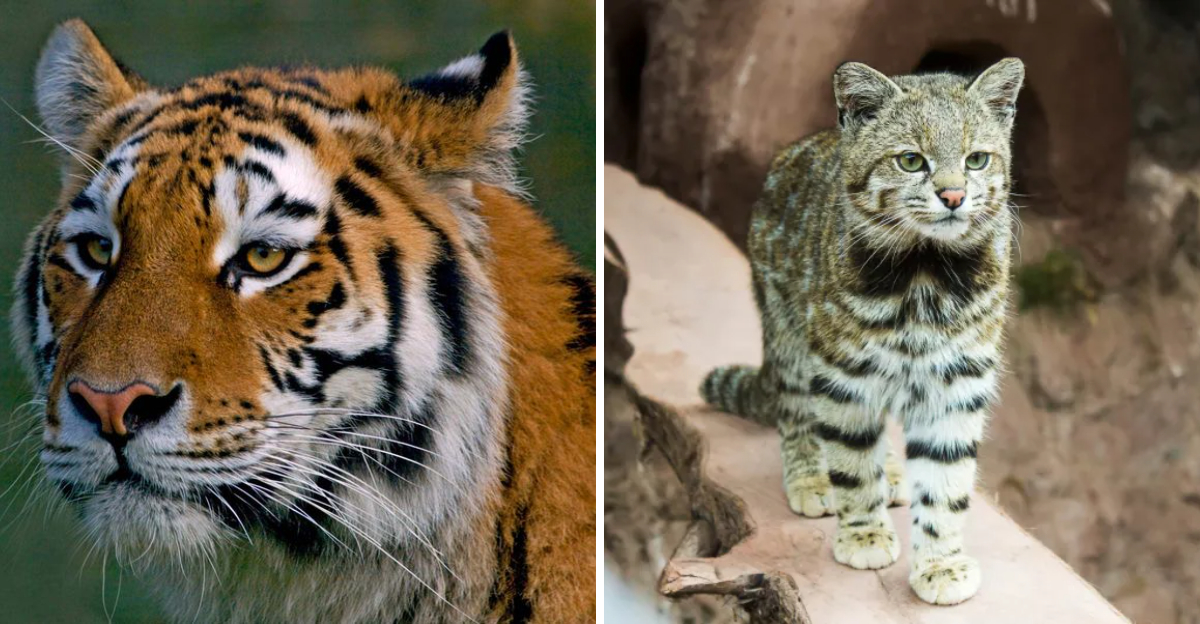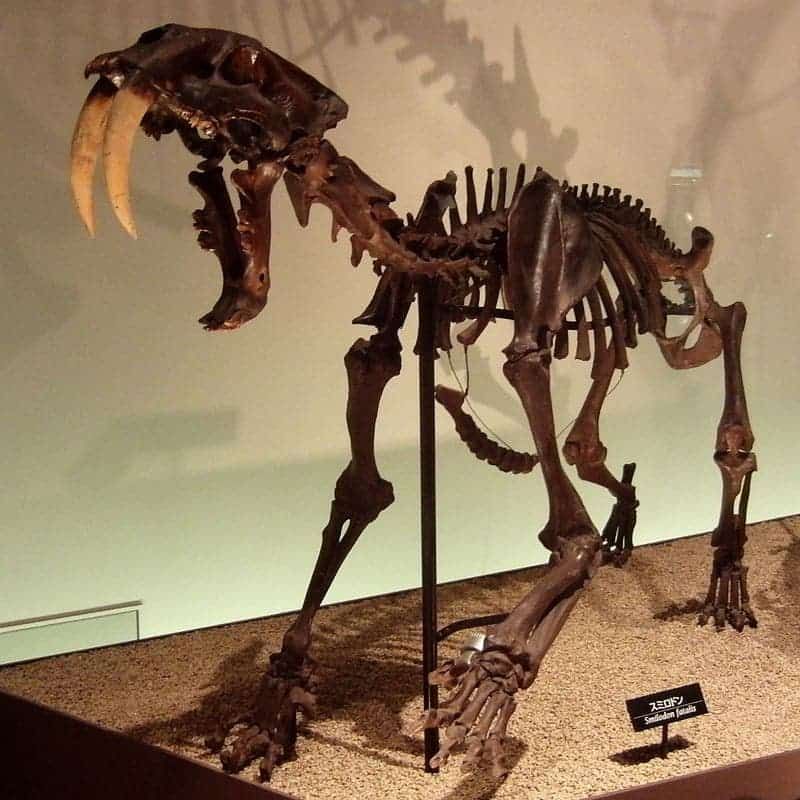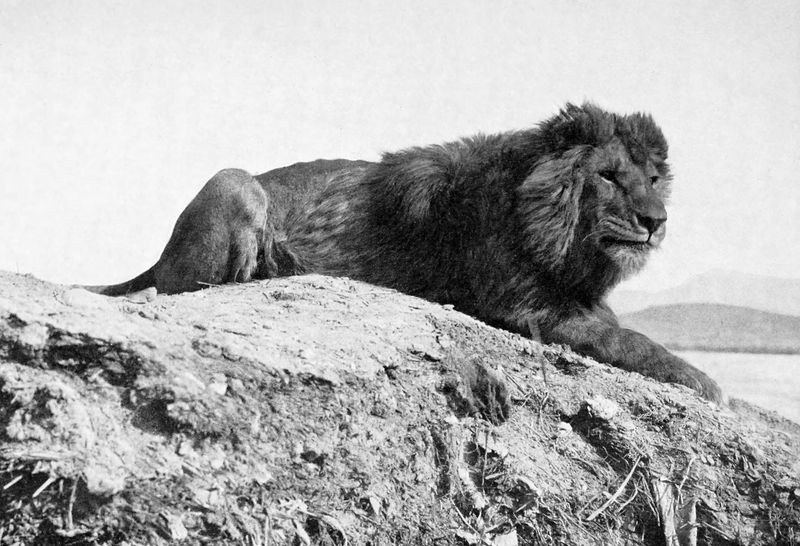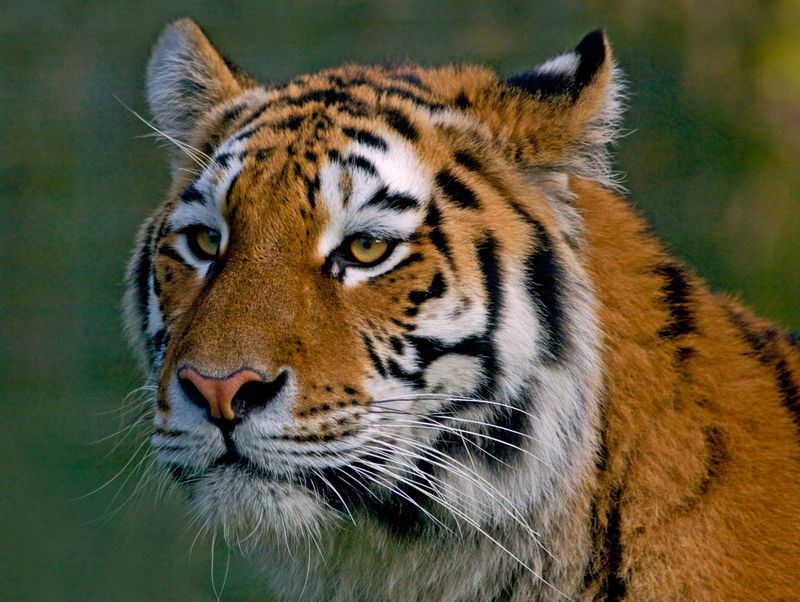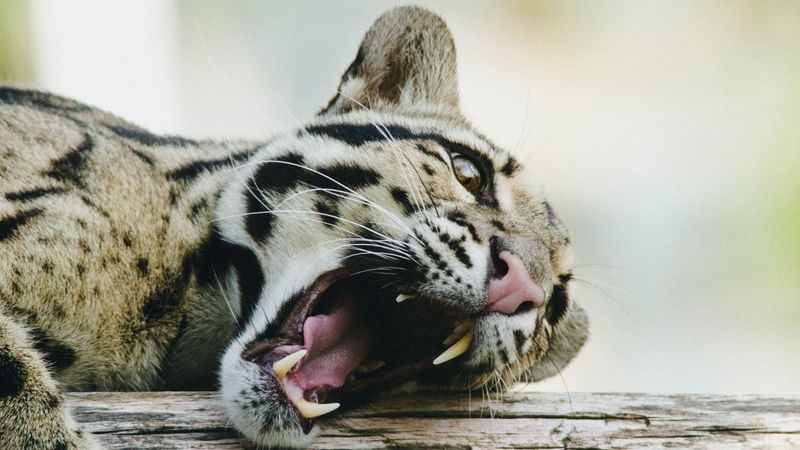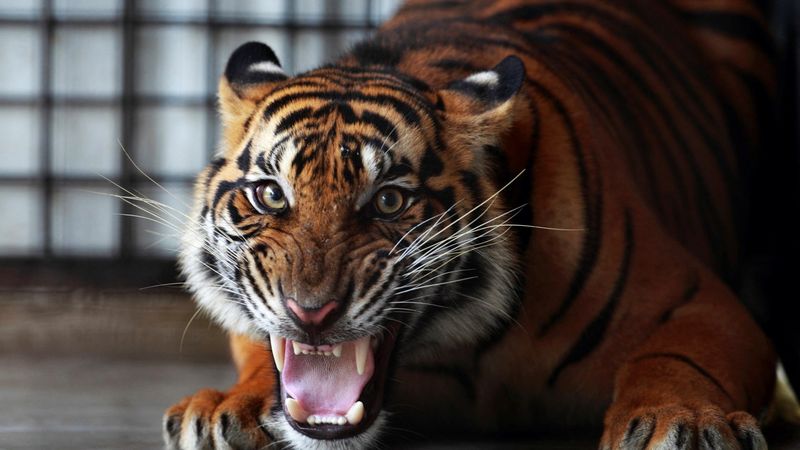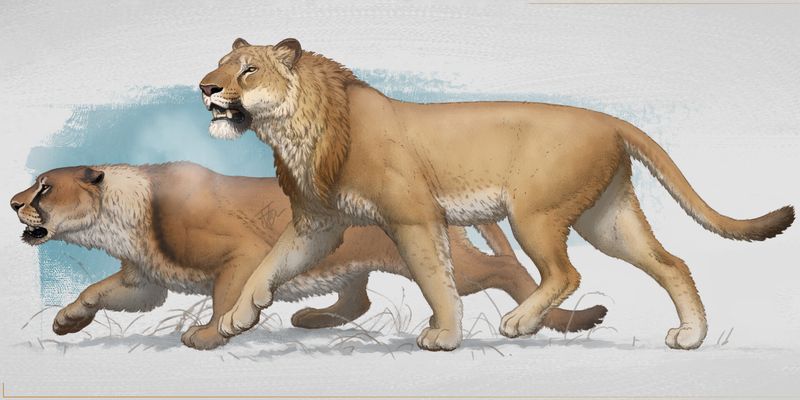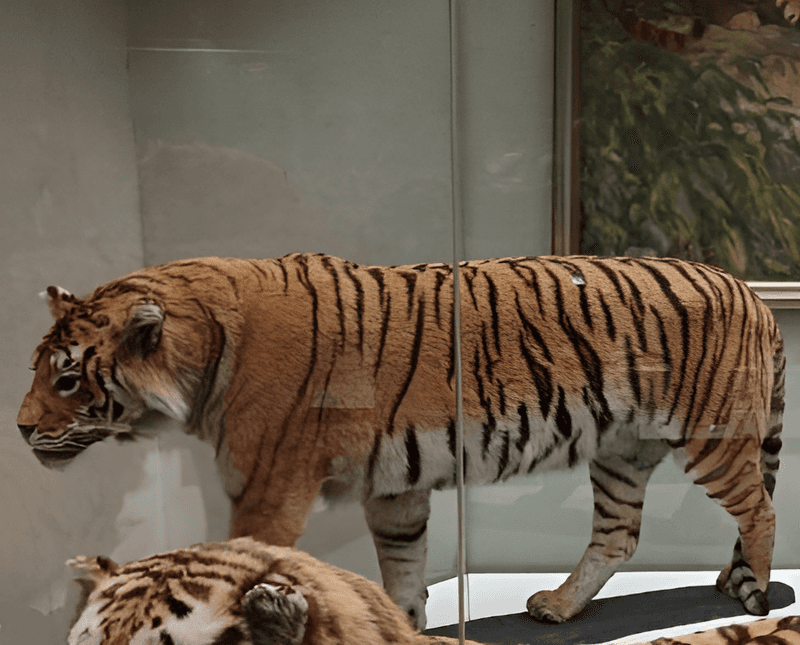📖 Table of Content:
Wild cats have evolved some truly remarkable features throughout history. From specialized hunting adaptations to unusual coat patterns, these felines developed characteristics that helped them survive in their environments. Unfortunately, some of these magnificent cats have disappeared or become extremely rare, taking their special features with them.
1. Saber-toothed Cat
The iconic saber-toothed cat vanished around 10,000 years ago, leaving behind only fossils of its most distinctive feature – enormous canine teeth that could grow up to 7 inches long! These impressive fangs were perfect for slashing through thick-skinned prey.
Scientists believe these cats had extremely powerful neck muscles to drive those teeth into their victims. Unlike modern cats that kill with a throat bite, saber-tooths likely used their teeth to create devastating wounds that caused prey to bleed out.
Their stocky, muscular build resembled a bear more than today’s sleek cats, giving them tremendous power but less speed than modern felines.
2. Barbary Lion
Once the kings of North Africa, Barbary lions roamed the Atlas Mountains with their massive black manes that extended across their bellies and to their hindquarters. Male Barbary lions were the largest of all lion subspecies, weighing up to 500 pounds!
These majestic cats went extinct in the wild during the 1960s, hunted to extinction by colonial trophy hunters. Their distinctive feature was that incredible mane – far more extensive than any surviving lion subspecies today.
A few lions with partial Barbary genetics may exist in zoos, but the pure wild Barbary lion with its spectacular mane is gone forever.
3. Bali Tiger
The smallest of all tiger subspecies, the Bali tiger disappeared forever in the 1930s. What made these tigers special was their unusually short, dark orange fur with fewer stripes than other tigers, which adapted perfectly to their island habitat.
Bali tigers featured distinctive patterns between their ears – unique markings that looked like the word ‘chai’ in Chinese characters. This marking was considered spiritually significant by local cultures.
These island dwellers had evolved in isolation, developing a compact body size that allowed them to move efficiently through Bali’s forests. The last confirmed Bali tiger was shot in 1937, erasing this unique subspecies from existence.
4. Clouded Leopard
The clouded leopard possesses the longest canine teeth relative to skull size of any living cat – proportionally matching those of extinct saber-tooths! These remarkable teeth come paired with incredibly flexible ankle joints that allow them to climb down trees headfirst like a squirrel.
Their cloud-shaped rosette markings give them perfect camouflage in dappled forest light. Some clouded leopards still exist in Southeast Asian forests, but their numbers have plummeted by over 50% in recent decades.
Most amazing is their ability to open their jaws 100 degrees wide – nearly twice what a domestic cat can do – giving them the largest bite gape of any cat relative to their size.
5. Javan Tiger
The Javan tiger featured unusually long whiskers and distinctive thin, closely-set stripes that were perfect camouflage in Java’s dense bamboo forests. These tigers went extinct in the 1980s after their habitat was systematically destroyed for agriculture.
A special feature of Javan tigers was their remarkable swimming ability, even by tiger standards. They could cross significant water barriers between islands, with special webbing between their toes that other tiger subspecies lacked.
Their calls were reportedly different too – locals described a distinctive vocalization unlike other tigers, more melodic and with unique patterns. This sound has been lost forever, as no recordings were ever made.
6. Eurasian Cave Lion
Cave paintings reveal that Eurasian cave lions lacked manes entirely – a feature that shocked scientists who had assumed all lions had manes! These enormous cats, up to 25% larger than modern African lions, roamed across Europe and Asia until about 12,000 years ago.
Frozen specimens discovered in Siberian permafrost showed these lions had thick, pale fur with possible faint spotting – adaptations to their Ice Age environment. Unlike modern lions, cave lions likely hunted alone rather than in prides, based on the distribution of their remains.
Their massive paws contained specialized pads for walking on snow and ice, with evidence suggesting they could bring down woolly mammoths when hunting cooperatively.
7. Caspian Tiger
The Caspian tiger boasted the longest fur of any tiger subspecies, an adaptation to the cold winters of Central Asia. Their reddish-orange coat featured unusually narrow stripes spaced far apart – instantly recognizable compared to other tigers.
These tigers went extinct in the 1970s, hunted to extermination and losing their riverine forest habitats. Most remarkable was their seasonal adaptation – growing a winter coat so thick and pale it sometimes appeared almost white in snow, while summer saw them shed dramatically.
Caspian tigers were supreme swimmers, specializing in hunting along rivers and wetlands with partially webbed paws. Recent genetic studies suggest they were nearly identical to the surviving Siberian tiger.
8. Andean Mountain Cat
The ghost of the Andes, this small wild cat lives at higher elevations than any other cat on Earth – up to 15,000 feet! With fewer than 2,500 remaining, its thick silver-gray fur and distinctive striped tail twice as long as its body are adaptations to the harsh mountain environment.
The Andean cat’s oversized paws work like natural snowshoes, distributing weight on snow and rocky terrain. Their blood contains special adaptations allowing them to thrive in low-oxygen environments where humans struggle to breathe.
Most fascinating is their ear structure – 30% larger inner ear canals than similar-sized cats, giving them extraordinary balance on precipitous mountain ledges. Few scientists have ever observed them in the wild.
